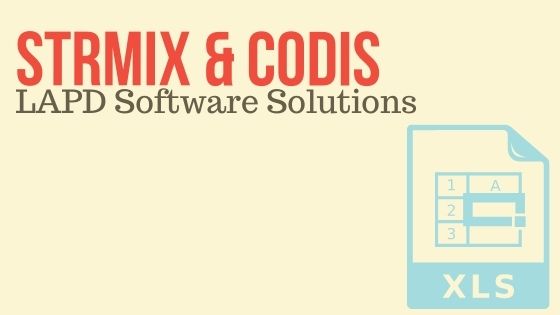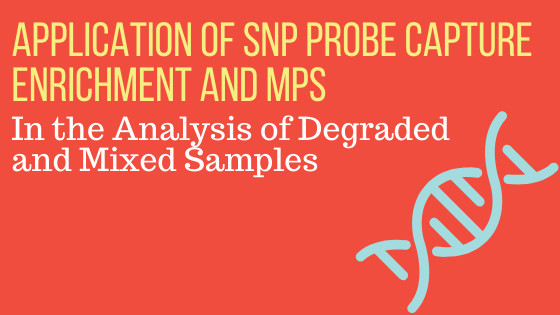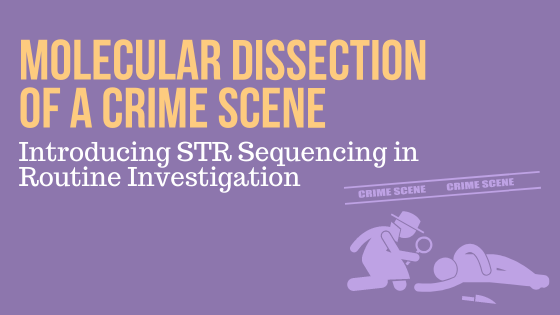STRmix & CODIS: LAPD Software Solutions

With the increasing adoption of probabilistic genotyping software for forensic DNA mixture analysis, the need for methods to upload and perform comparisons for deconvolutions has risen. LAPD has developed internal solutions and methods to develop profiles suitable for CODIS upload from STRmix deconvolution results as well as software tools to aid analysts in comparing possible […]
I’ve Got 99 Problems from Public Perception

The television show, CSI (Crime Scene Investigation), was first introduced to viewers in 2000, and for 15 years, viewers followed Gil Grissom and, later, D.B. Russell and their team of criminologists as they used physical evidence to solve crime in Sin City. According to Entertainment Weekly, crime drama television shows accounted for 13 of […]
Long-Read Sequencing Technique As A Powerful Tool In Forensic Investigations

In the past twenty years, the statistical data on murders in USA stated that males account for most of the violent crimes. The work of the forensic analyst is very hard when dealing with evidence coming from a vaginal swab in a rape case, as the samples present mixtures. Because of this, the interpretation of […]
Application of SNP Probe Capture Enrichment and Massively Parallel Sequencing in the Analysis of Degraded and Mixed Samples

Samples that are highly degraded and mixed in nature are commonly found in mass disaster events, missing persons, and forensic casework and often pose issues with conventional short tandem repeat (STR) typing by capillary electrophoresis (CE). DNA fragment sizes less than 150 bp present issues as two intact primer binding sites may not be present […]
Molecular Dissection of a Crime Scene: Introducing STR Sequencing in Routine Investigation

I currently work as a post-doctoral researcher at the Institute of Legal Medicine, Ludwig Maximilian University of Munich (LMU). My ongoing research concerns the application of NGS in the routine forensic work. Written by: Marta Diepenbroek, Institute of Legal Medicine I started to work in forensics in 2012 and I was very […]
Under the Microscope – Nicole Novroski

De-convolution of complex mixtures can be challenging. Various improvements in polymerase chain reaction coupled with capillary electrophoresis (PCR-CE) and massively parallel sequencing (MPS) chemistries coupled with downstream statistical analyses have been developed and implemented to better resolve two or more person DNA mixtures. However, current genotyping outputs describe STR variation solely based on allele size […]
Under the Microscope – Kevin Cheng

Reproducibility is one of the main principles of the scientific method. Reproducibility in forensic DNA interpretation typically relates to the reported match statistic. The development of probabilistic genotyping (PG) solutions using semi-continuous and continuous models was partly in a response to intra and inter laboratory differences to improve reproducibility of the results. However, there are still […]
Mixture Interpretation in DNA Forensics – An Interview with Greg Hampikian

Greg Hampikian, Executive Director of the Idaho Innocence Project, discusses concerns he has with current mixture interpretation procedures, changes he’d like to see for the future, and thoughts on how to improve forensic science. Transcript: Laura: Hi, we’re here at ISHI 29, and we’re talking with Greg Hampikian. Greg, why don’t […]
DNA Mixtures: A Forensic Science Explainer

Everyone’s DNA is slightly different. Thirty-five years ago, when scientists invented a way to distill those differences into a DNA profile, they revolutionized forensic science. That profile—a sort of genetic fingerprint—gave investigators a new and extremely reliable tool for solving crimes. DNA profiling can be so powerful and has been used successfully in so […]

